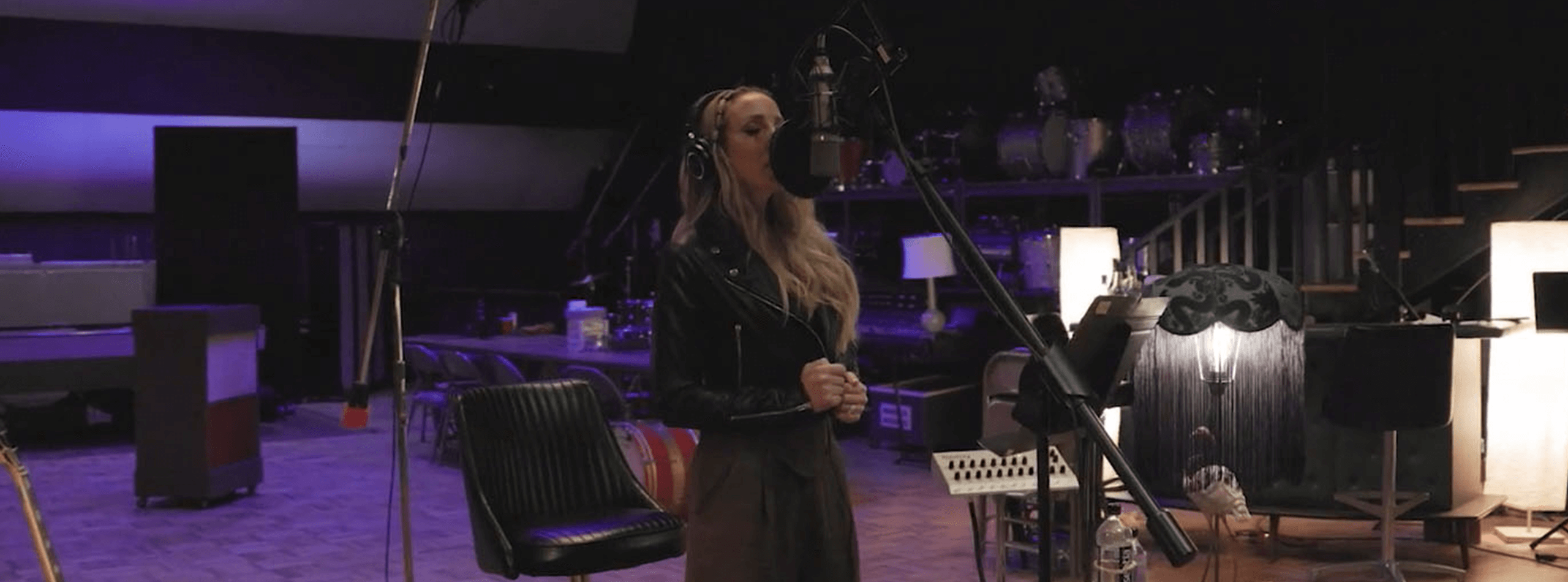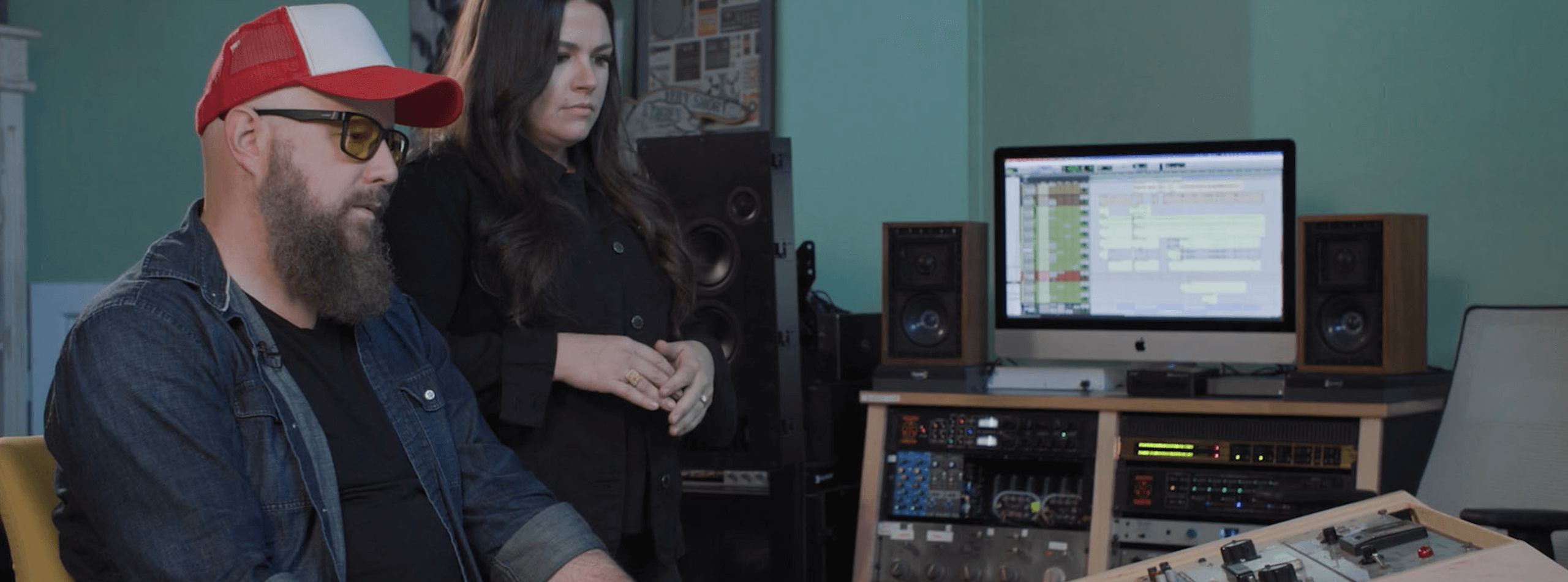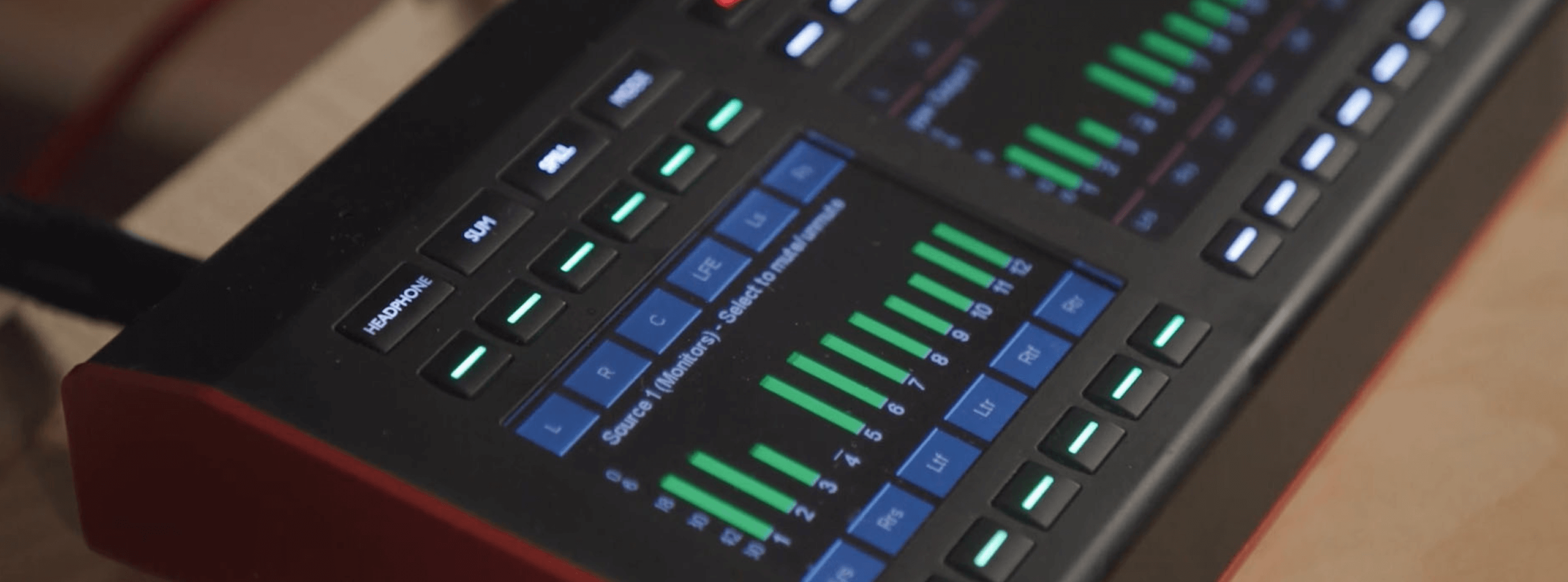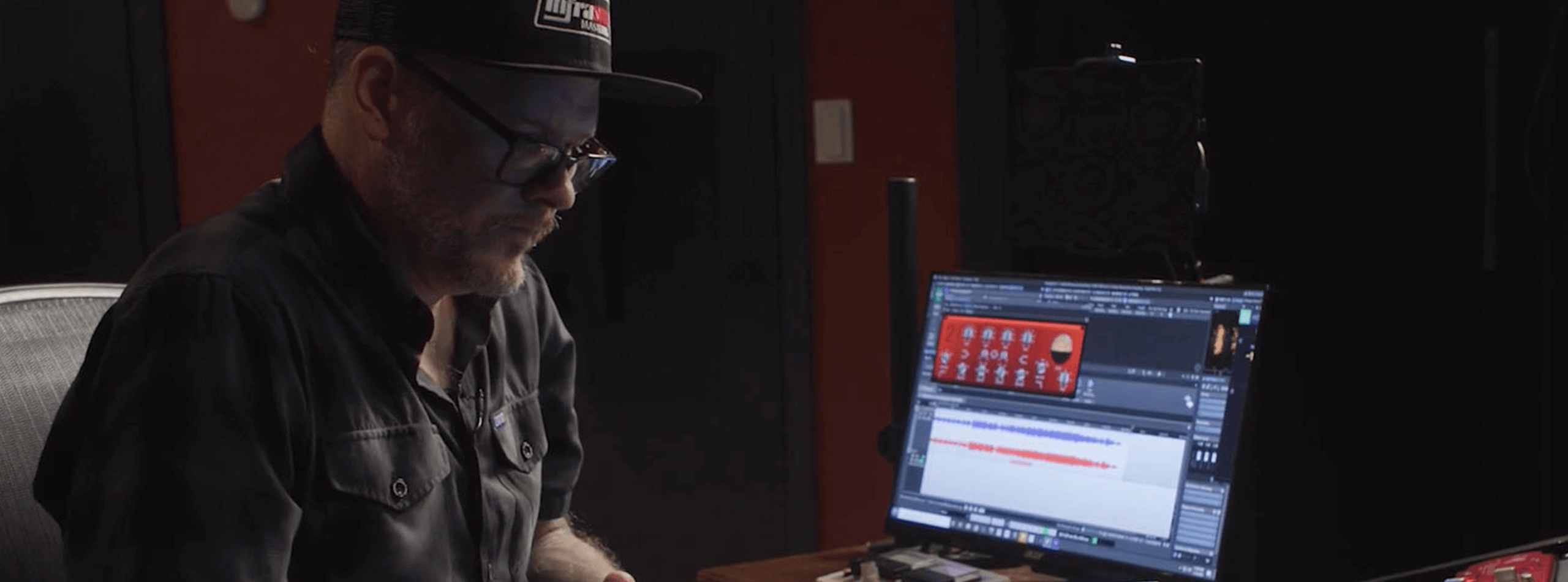Spotlighting the production of the new Ashley Monroe single, “Over Everything”

Working in Nashville, producer/tracking engineer Gena Johnson, mixer F. Reid Shippen, and mastering engineer Pete Lyman used Focusrite tools through the song’s entire production process (including both stereo and immersive Dolby Atmos® mixes and masters)
Focusrite has released a video series documenting the production of the new single “Over Everything” from Nashville-based artist Ashley Monroe, known for her solo work and as a member of Pistol Annies.
We spoke with producer and tracking engineer Gena Johnson, mix engineer F. Reid Shippen, and mastering engineer Pete Lyman, and they recount the technical and artistic steps involved in the song’s completion. Notably, Focusrite technology was used throughout the entire process, including the initial tracking session at Nashville’s legendary RCA Studio A, stereo and immersive Dolby Atmos® mixes at Shippen’s Robot Lemon mix room, and masters at Lyman’s room at Infrasonic Sound.
Monroe presented the song as a bare-bone worktape to Johnson, who recognized the tune’s classic country vibe but was eager to explore different possibilities for the record’s eventual sound. Some of the Nashville community’s top studio players were assembled for the session, and after charting the song’s structure and undertaking some communal pre-production, they got to work tracking, with everyone involved encouraged to play outside of standard traditional country stylings. New ideas were uncovered at every turn, and the result is bold yet ethereal and atmospheric – bordering on experimental – complete with drum loops and subtle synth pulses as well as tasteful steel guitar and swirling B3 organ.
Johnson reflects on the tracking studio’s fabled history. She remarks, “RCA Studio A is one of the most historic studios, not only in Nashville but in the world. I love the history in that room. If the walls could talk! It has housed some of the greatest musicians and most legendary records, from Dolly Parton – ‘I Will Always Love You’ and ‘Jolene’ recorded in the same three-hour session – to Chris Stapleton’s latest album. It’s my absolute favourite studio.”
The technical aspects of the tracking session’s signal path were carefully considered by Johnson: “Ashley has a very naturally country voice, and so I didn't want something that was going to be really bright. I chose a [Neumann M] 269 [vintage tube microphone], and then I went into a Neve 1073 [preamp], and then to a Fairchild 660 [compressor]. I definitely have a soft spot for analogue. I love working on a real console. I love hands-on faders. I love being able to EQ something right there very quickly and get the result you want.” But all of these analogue elements require a robust bridge to the digital realm out of the studio’s 32-channel, 24-bus API Legacy AXS console, and Focusrite provided just the right solution: “We used the Focusrite Red 16Line as our main interface. We had 16 channels of audio running directly into Pro Tools.”

After an intensive pre-mix process by Johnson with the artist, the session files were handed off to Shippen for mixing in both stereo and an immersive Dolby Atmos version. “Gena did an amazing job with the song,” he notes. “I don’t know what she did wrangling the musicians around, but what ended up coming across my desk was this super cool, vibey song.”
Shippen generally works closely with his engineer Brandon Heath to organize all of the elements in a session before the mix process starts. “The idea is to get things ready at the beginning so I can walk in, hit play, and just mix, and not worry about any of the technical stuff,” Shippen remarks. He notes that his job as mixer is to serve the song and the listener, and that often requires addressing some very specific details: “One of the challenges when you’re mixing is making sure all the phase relationships between all the drums and samples and everything line up, so when the kick drum hits, or the chorus comes in, it really feels good.”
Shippen recalls, “For this particular song, I mixed it with a Focusrite Red 16Line and the RedNet R1 desktop remote. I’m kind of blown away at the functionality of the Focusrite stuff. The Red 16Line sounds good and has incredible headroom. There are a lot of interfaces out there, where it’s not that they have a bad conversion, it’s just that the analogue can’t handle the headroom, so things get clipped and things get weird, but the Focusrite can take anything I throw at it, which is great.”
The shift to a Dante® setup has helped simplify Shippen’s workflow. Previously he was often juggling several different formats and disparate outboard gear speaking different languages, but now with Dante, “It’s one cable. Done. Amazing.” Mixing this track, Shippen also took advantage of the Hitmaker Expansion plugin bundle, which comes standard with the Red 16Line and other Focusrite interfaces. Specifically, he used the Red 2 & 3 Plugin Suite to address vocals, surgically EQ’ing the track and adding compression where needed.

Creating an immersive version of the track was a special treat for Shippen, who first got the stereo mix approved by the artist before he began his Atmos mix. “Switching from stereo to Atmos, we have found that the easiest thing to do is to create a stem set, which is something we often generate anyway to provide to the label or artist. Because most of my mix decisions are baked into the stem set, it can be pretty straightforward for us to decide what goes where in an immersive mix. Atmos is an evolving field in music, and anything that is disruptive will present challenges. The trick is having gear that works and is flexible enough to let you figure out what you’re doing and try new things, and then you can do the work. We’ve all been mixing in stereo for a long time. There are a lot of tricks and techniques that you use to cram a hundred tracks through two speakers for a stereo mix. In many ways, it’s a lot easier when you have 13 speakers for an immersive version. It’s a much larger palette to paint in, and you don't have to crush stuff dynamically, and you don’t have to force things on top of each other. You can move elements and place them in what feels like 3D space. We all hear music in 3D space in real life, so a stereo mix is actually kind of unnatural, even though we are all used to it. With an immersive mix, it can make you feel like you are inside of it rather than just looking at it.”
Shippen shares a building with the Nashville location of Infrasonic Sound, home to mastering engineer Pete Lyman, who was the next engineer to work on the song. “[Reid and I] think a lot alike,” remarks Lyman. “We have very similar perspectives on audio and engineering and work really well together. We have done hundreds of tracks together, so I sort of know what to expect and understand the vibe that they’re going for.”
“With Ashley, the most important thing is the vocal,” Lyman notes. He likewise employed the Red 2 & 3 Plugin Suite from the Hitmaker Expansion bundle to dial-in his stereo and Atmos masters for the song: “The Red 2 plugin is great, and that was the main EQ we ended up using on this track. We did some work to focus Ashley’s vocal and make it pop just a little bit, and then we tightened up the low end by using a combination of low-frequency shelving and boosting in the higher-frequency range. We also use a Focusrite Red 3 hardware unit here quite a little bit, and we will actually float that around the facility depending on who needs it.”

The so-called “loudness wars” might be a passe trend, but artists and labels still expect a master that matches the general loudness of other songs on the radio or streaming services, often requiring a deft mastering hand to generate the desired volume without sacrificing dynamics. In Lyman’s opinion, “If you’re trying to achieve a loud master, 80 to 90% of that loudness starts at the mix level. So ideally, the way I achieve gain is by picking up a few dBs here and there through my analogue chain or my digital chain if I’m working all digitally and then hitting the final limiter.” And working with Johnson and Shippen, Lyman is lucky on that front: “With this song, we didn’t have to spend a lot of time fixing any problems because we’re dealing with two professionals that really know what they're doing. Our job here is just to enhance the track and give it the best presentation possible.”
Shippen and Lyman are in the planning stages of outfitting a new facility together, and Focusrite is a key piece of the puzzle. “Our new space will incorporate mastering, tracking and production rooms, and we want to have a facility that is truly networked,” states Lyman. “We want to be able to route digital audio anywhere. If we need to route a stereo feed from a tracking room to a pre-production room 50 yards down the hallway, we need to be able to do that and do that quickly, and a Dante network with Focusrite interfaces is the right way forward. When we first heard the Red 8Pre, we loved it, and we figured that it would be a solid foundation for the new studio. It’s nice and transparent, and it gives us exactly what we want.”
After the track’s core work wrapped, Johnson, Shippen and Lyman gathered to do a victory lap and talk with each other about the process. “One of the things I liked the most about this track is that there was a fair amount of stuff on it, but everything had its place,” remarks Shippen. “You [to Johnson] did an amazing job of making sure that the interplay between the instruments was working and there was some really cool subtle stuff. The guitar was super simple and beautiful. A lot of times people use guitars to fill up the mid-range of a track, but this one, it was more about the keys and about the vocal, which was super cool.”
Citing the track’s unorthodox arrangement, Johnson adds, “It’s all about emotion with [Ashley]. It doesn’t have to ‘make sense.’ Certain things we did, just felt right, and you go with what feels right. There are no rules.”
Commenting on the Red 16Line, Johnson sums it up: “I love how transparent it is. I just know what to expect, and it doesn’t colour the sound.” Shippen agrees: “Everything I got sounded crystal-clear. Nothing was intrusive. Everything felt clean and open. I thought it sounded fantastic.”
On the three engineers working together, Lyman notes, “It’s like a perfect union. It was so great to hear a track that Gena recorded, and Reid mixed. Two of my favourite engineers! By the time it gets to me, it’s like, ‘Well, this is already great.’ Not to go off on a tangent about Nashville, but this is how we all do it here. This is how most projects are done. It’s a communal effort, and that comes across. There is a lot of heart and soul put into this art. We can keep pushing each other to get better and better, and that’s what’s so great about having this amazing community.”
